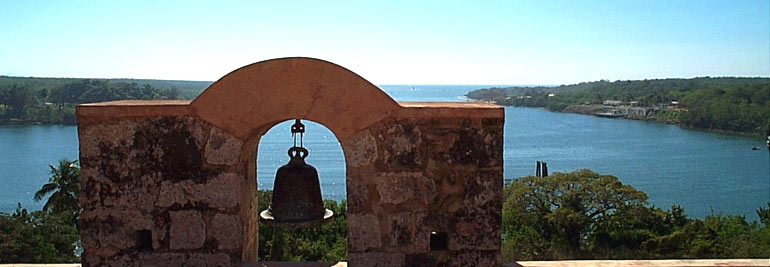
|
||||||||||
 Jagua Castle - Castillo de Jagua and scenic Cienfuegos Bay. 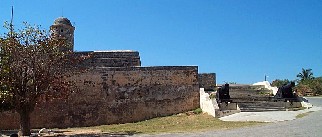 Castle has a legend of the Blue Lady, transmitted from generation to generation, says that during the first few years of the fortress, the shadow of a woman wearing an elegant blue dress emerged from the castle's chapel, and after she walked along the high walls, she disappeared suddenly. According to the legend, one night the young officer met the so-called Blue Lady, and the following morning, the soldiers found him unconscious on the floor, with his broken sword beside him, along with a skull and an elegant blue cloak. After that, the officer lost his mind, and no one ever knew the true story about the Blue Lady, whose legend has survived the passage of time. 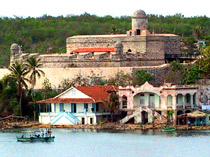 Castillo de Jagua Fortress, was declared National Monument, the castle restaurant offer choice of dishes from the world’s cuisine and "La Dama Azul" the main course, livened up with live music and special nights with the production of the Blue Lady's legend, open 12:00-22:00 Cuba was one of Spain's first New World conquests. Cienfuegos, however, was only founded in 1819. Sugar was by then the dominant cash crop and Yankee merchant firms, among them Boston's "E. Atkins & Company" were active in its exchange. Thus Edwin F. Atkins, the founder's son, first visited the island in the 1860s in order to master the family trade and the connections upon which it was based,in 1919 induced Atkins to arrange a long-term lease of land and to pledge an eventual endowment of $100,000 the "Atkins Fund for Tropical Research in Economic Botany" for what became known as the "Atkins Institute for Tropical Research," today's Cienfuegos Botanic Garden. 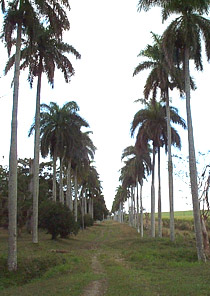 Atkins himself died in 1926, though both his widow and his son-in-law , who followed him as president of the Soledad Sugar Company continued to support the Garden. The Revolution, and the following downward spiral in USA - Cuban relations, provoked an extended hiatus in the Harvard University connection, operations were gradually reduced. Cuban government took over the facility, and has managed it ever since. |
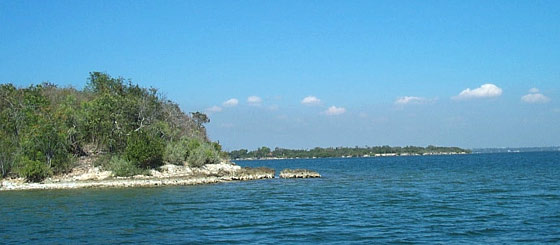 La Bahia de Cienfuegos "Cienfuegos Bay" was one of the first discovered by Christopher Columbus in Cuba. It's the biggest and most beautiful bay in Cuba, it developed into a hub for shipping during the 16th and 17th centuries, but the actual city of Cienfuegos was not established until the Spanish built a fortress. 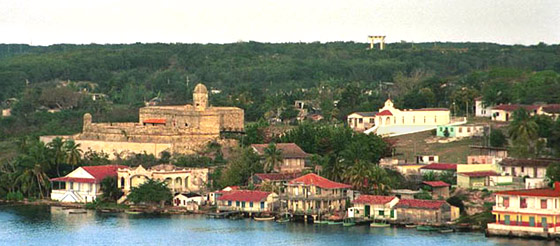 "Castillo de Jagua", Cuba's most beautiful colonial Spanish fortress. Erected over Cienfuegos Bay and caressed by it's crystal-clean and balmy waters. From Cienfuegos port you can get there by ferry, crossing the Cienfuegos Bay across to castillo village. On Ferry ferry ride cross the bay you will meet people from Castillo de Jagua fishing-town. Visit Pasacaballos the fortress of "Lady of the Angels" and fisher's house where you can taste exquisite seafood next to the serene waters of the bay. 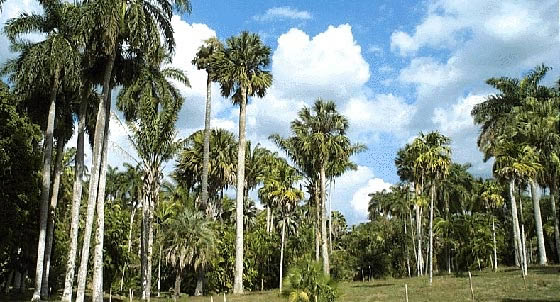 Cuban's largest Botanic Garden is located about 25 km from the Cienfuegos. You can get there by taxi, or you have to rent a car. Admission for tourist is CUC$ 5. The "Pepito Tey" sugar complex, welcomes visitors to a park-like setting of palms, orchids, bamboos, and myriad other tropical plants. The exotic vegetation; entry lane of royal palms. How did the Garden come by its more than two thousand tropical species? What purpose does it serve? From whence the now-faded markers of a Harvard University connection? By the turn of the century, Harvard's annual reports regularly referred to the "Experimental Garden in Cuba" relabeled the "Harvard Experiment Station in Cuba". The Garden's initial preoccupation was to grow sugar cane from seed rather than cuttings, a first step toward the larger goal of developing more productive and resistant strains. Other work addressed cane diseases and pests, and tropical food crops . The "Harvard House" for visiting researchers and students, and aggressive programs to obtain more plant species were put into place. The Botanical Garden in fact engaged in a variety of pursuits. Wartime appeals from Washington led to experiments with rubber trees. Research on tropical food crops reflected Edwin Atkins's initial wish that the Garden, as one of its goals, address the island's general welfare. Tree saplings were cultivated for reforestation efforts at By the 1950s, Harvard University was using the Garden for summer courses in Tropical Botany. The Garden became a local tourist destination as well, provoking worried accounts of thirsty plant lovers. 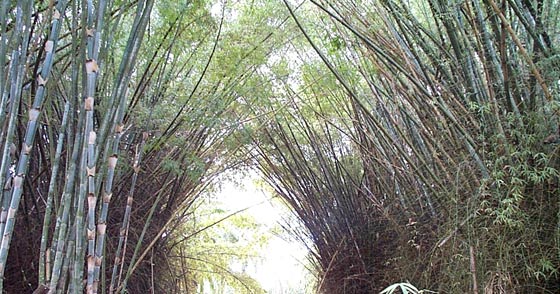 |
|||||||||




